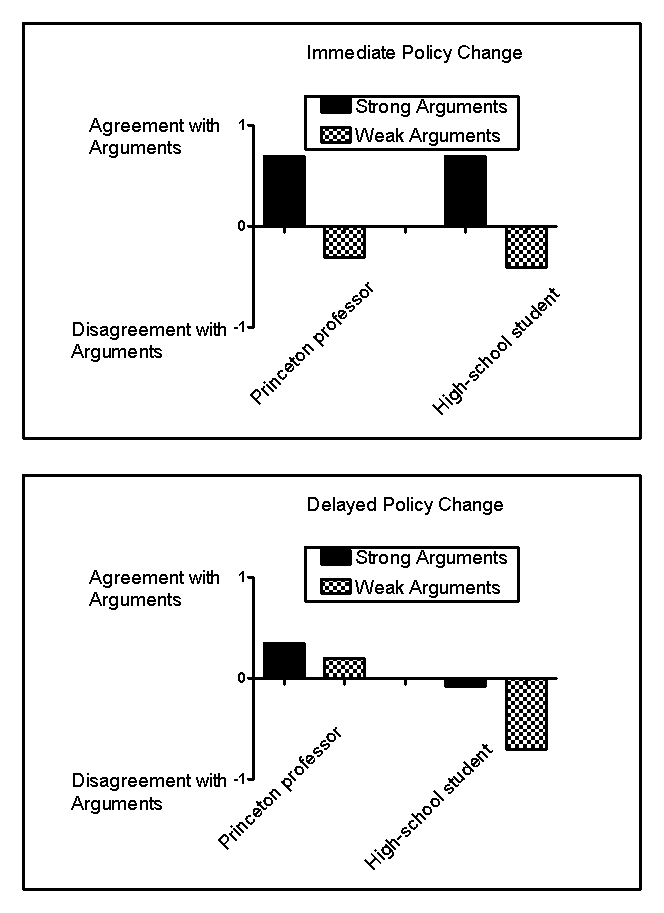Use the following to answer questions
Scenario II
The following scenario contains fabricated results consistent with the following study:
Petty,R.E. ,Cacioppo,J.T. ,& Goldman,R.(1981) .Personal involvement as a determinant of argument-based persuasion.Journal of Personality and Social Psychology,41,847-855.
Every day,consumers are exposed to scientifically based sales,marketing,and public relations strategies designed to influence purchasing decisions,change opinions,or win votes.One common sales strategy is the foot-in-the-door technique,a method that involves first making a smaller request that consumers are likely to grant and then following it with a larger request.Another common strategy is the door-in-the-face technique,which involves making an unreasonably large request that consumers will reject and then following it with a smaller request.When persuasion is necessary,it usually takes one of two forms: heuristic persuasion,which involves an appeal to habits or emotion,and systematic persuasion,which involves an appeal to facts and reason.Often,people will rely more on heuristics-simple shortcuts or "rules of thumb"-to make decisions instead of systematically weighing the evidence.
Petty and colleagues (1981) investigated some of these techniques in college students listening to arguments in favor of their college requiring an institution-level comprehensive final examination for graduation.Some students were led to believe that,if adopted,this policy would take place right away,and some were led to believe that the change would take place in a decade.In addition,some of the students were led to believe that they were listening to an argument from a Princeton professor,and others were led to believe that they were listening to an argument from a high-school student.Finally,some students heard strong arguments in favor of the policy,and some heard weak arguments.Thus,the experiment arranged six groups of students.For example,one group of students heard strong arguments from a high-school student about a far-removed policy change.Figure 13.1 shows fabricated results illustrating the major findings of this experiment.
Figure 13.1 
-(Scenario II) The foot-in-the-door technique works primarily because consumers:
Definitions:
Data Visualization
The graphical representation of information and data. By using visual elements like charts, graphs, and maps, data visualization tools provide an accessible way to see and understand trends, outliers, and patterns in data.
Reasoning Tasks
Activities or problems designed to engage cognitive processes for the purpose of arriving at conclusions or making decisions.
Data Visualization
The practice of representing data in graphical or pictorial format to make information easily understandable.
Marketing Research
The process of gathering, analyzing, and interpreting information about a market, including products and services, target market, and customers for the purpose of improving business decisions.
Q5: Tim is a government employee who issues
Q6: Rima always hated giving class presentations because
Q7: Which statement about gender differences in personality
Q8: Researchers who believe that personality traits reflect
Q21: In Western cultures,people historically got married because
Q34: According to Jeffrey Gray,people with a highly
Q51: Agreeableness is one of the Big Five
Q157: When Kate gets extremely upset,she secretly cuts
Q196: The Big Five Factor Model does NOT
Q236: Research on the consistency of personality in